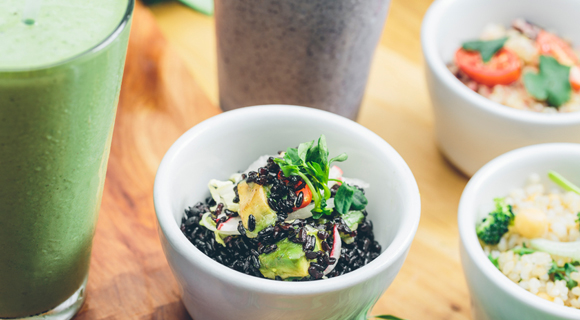
A closer look at celiac disease and gluten sensitivity
Should YOU Go Gluten-Free?
What you need to know about celiac disease and gluten sensitivity.
If you and gluten just don’t “jive,” you can rest assured that you’re not alone. The National Institutes of Health calculates that 1 in every 133 people in the United States struggles with celiac disease (gluten enteropathy). And if that’s not enough to make for good company, remember that there are many others who are sensitive to gluten.
So what exactly is gluten? It’s a protein, and you can find it in grains such as wheat, rye, and barley. Food-wise, you’ll come across gluten in staples such as crackers, pasta, bread, and baked goods.
All pretty intuitive, right? Not exactly. Gluten is known to make an appearance in foods you wouldn’t necessarily expect. If you have celiac disease, these encounters could cause your immune system to unleash a battle cry and attack said gluten, which causes some real discomfort for your small intestine and makes it more difficult for your body to absorb necessary nutrients.
Children who have celiac disease tend to show digestive symptoms, including:
- Chronic diarrhea
- Vomiting
- Abdominal bloating and pain
- Irritability
- Pale, foul-smelling, or fatty stool
- Unexplained weight loss
Adults may have additional non-digestive symptoms, which include:
- Unexplained iron-deficiency anemia
- Fatigue
- Bone or joint pain
- Arthritis
- Bone loss or osteoporosis
- Depression or anxiety
- Tingling and/or numbness in hands and feet
These symptoms are tricky because they can mimic other conditions, disguising themselves in the form of irritable bowel syndrome, chronic fatigue syndrome, and other relatively common conditions. If the diagnosis isn’t quite clear, there is an antibody blood test and intestinal biopsy that can be used to blow the disease’s cover, but these aren’t always necessary.
So, what’s the most common treatment? Say “farewell” to gluten, and “hello” to substitutes such as potatoes and alternative flours. At a loss for ideas? Try flour made with corn, rice, oats, buckwheat, flax, or soy. As always, err on the side of caution and ask your doctor about referring you to a registered dietician for additional guidance if you need to follow a special diet.
*Kaiser Permanente is not responsible for the content or policies of external Internet sites.





